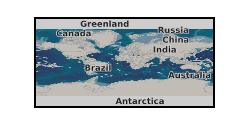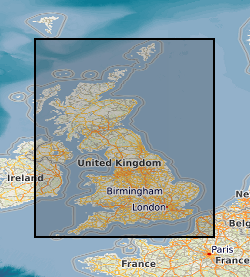Magnesium
Type of resources
Available actions
Topics
Keywords
Contact for the resource
Provided by
Years
Formats
Representation types
Update frequencies
-

The dataset includes oxygen and carbon stable isotopes measured on multispecies planktonic foraminifera from 15 million years ago to the present, as well as trace elements ratio and abundance counts. For the code availability and instructions to run the cGENIE version and experiments see Boscolo-Galazzo, Crichton et al. (2021).
-

Mg/Ca in multiple species of planktonic foraminifera from five time slices since the Middle Miocene to present (target ages 15, 12.5, 10, 7.5, 4.5, 2.5 and 0 Ma). These samples are from a range of globally and latitudinally distributed DSDP (Deep Sea Drilling Program), ODP (Ocean Drilling Program), IODP (International Ocean Discovery Program) open ocean sites. From low to high latitudes these are: Site U1338, U1489 (Eastern and Western Equatorial Pacific), Sites 871, 872, and Site U1490, (Western Tropical Pacific), Site 242 (Mozambique Channel, Indian Ocean), U1482 (Australian Continental Margin), Site 516 (Western Atlantic Ocean), Site 1138 (Kerguelen Plateau, Southern Ocean). The Mg/Ca ratios were measured using Inductively coupled mass spectrometry (ICP-MS) at Cardiff University between December 2018 and June 2019. The data were collected to explore Mg/Ca values for modern and extinct species at different intervals of time (which were different climatically) and at different geographical locations. This data was collected by E.Mawbey as part of a project funded by NERC (Q10 project) to investigate changes in foraminiferal depth habitat in response to different climate conditions.
-

Strontium/calcium, magnesium/calcium, lithium/calcium and boron/calcium ratios of 107 aragonite samples precipitated in vitro using a pH stat titrator using the constant composition technique between August 2020 and April 2022. Measured seawater pH and dissolved inorganic carbon concentrations (DIC) are used to estimate the seawater aragonite saturation state (O) of each precipitation. Aragonite precipitation rates are estimated from the rate of titrant dosing. The trace element contents of the solid produced in the experiment was corrected for the composition of the seed used as a surface for aragonite growth. Seawater [Sr], [Mg], [Li], [B] and [Ca] were also measured and seawater [B(OH)4-] is estimated from total seawater [B] and pH. Data were collected to determine how changes in the calcification fluids of calcareous organisms affect aragonite precipitation. Data were collected by Cristina Castillo Alvarez and Ed Hathorne and interpreted by Cristina Castillo Alvarez, Nicola Allison, Adrian Finch, Kirsty Penkman, Roland Kröger, Ed Hathorne and Matthieu Clog.
-

This dataset represents the first publication of complete national maps from the Geochemical Baseline Survey of the Environment (G-BASE) and TellusNI projects, whose aim was to conduct a national geochemical survey of the United Kingdom in order to improve understanding of our geology and environment and provide quantitative evidence against which to gauge future environmental change. This dataset consists of a series of interpolated raster (ASCII grid) maps displaying the concentrations of a suite of chemical elements (and oxides) in the stream sediments of the United Kingdom. The chemical elements are as follows: Arsenic, Barium, Calcium (CaO), Chromium, Cobalt, Copper, Iron (Fe2O3), Lanthanum, Lead, Magnesium (MgO), Manganese (MnO), Nickel, Potassium (K2O), Rubidium, Uranium, Vanadium, Zinc and Zirconium.
 NERC Data Catalogue Service
NERC Data Catalogue Service